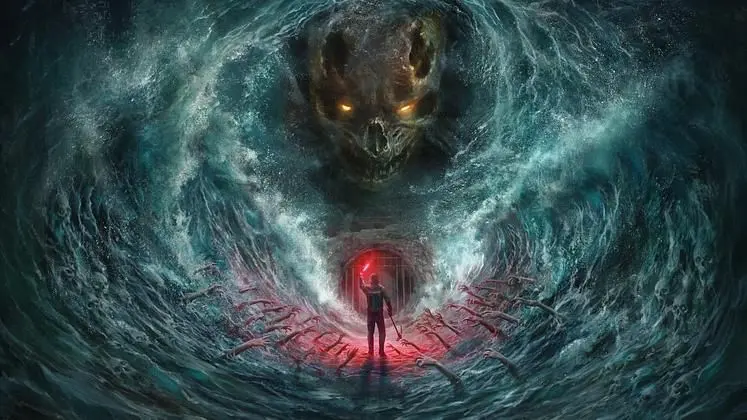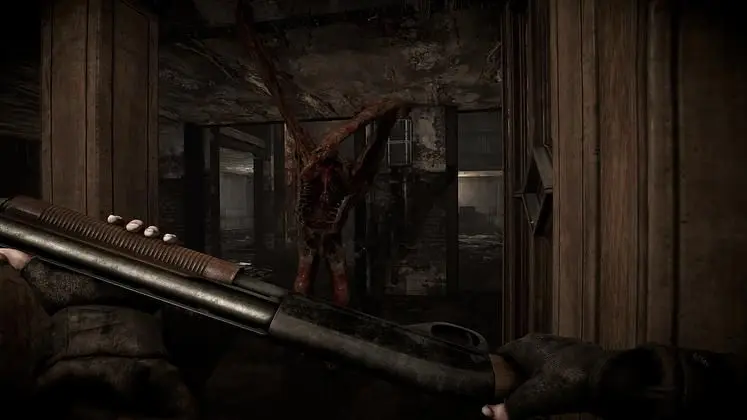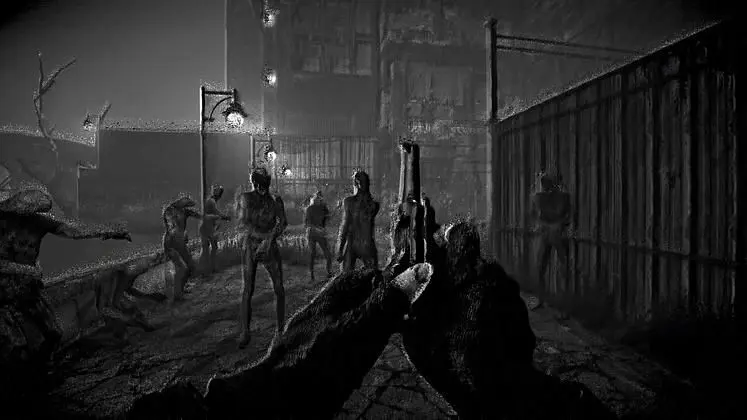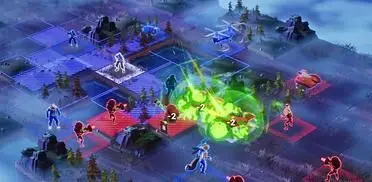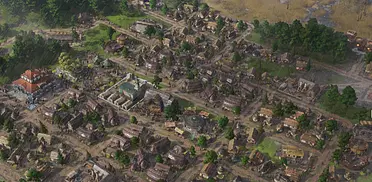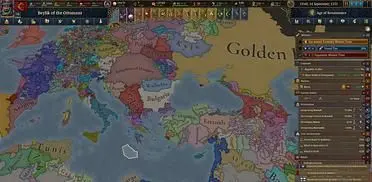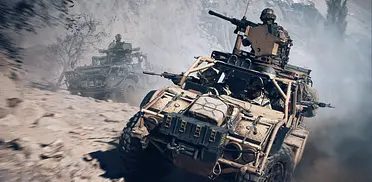Ambitious conversion mods turned into standalone releases aren’t uncommon. It’s impossible to fully understand gaming’s complex history without knowing about the origins of Counter-Strike or DOTA 2, for example. Now, it’s Total Chaos’ turn. Built on top of the FPS classic DOOM II originally, it’s making a return as a separate, Unity-powered game.
After spending a few minutes with the original mod or Total Chaos’ shiny remake (which has just been shadow-dropped), it wouldn’t be weird to point out solo developer Sam Prebble (Turbo Overkill) has been influenced by the Resident Evil and Silent Hill series. Funnily enough, he hadn’t played any of them when he was working on the mod, yet those unmistakable ancient ‘retro survival horror’ vibes are there, making Fort Oasis oppressive in familiar ways before it transforms into a more unique setting.
The Silent Hill connections are taken a step further this time around with the legendary composer Akira Yamaoka adding two new haunting musical themes on top of the great original score by Total Chaos mod composers Jason Dagenet and William Braddell, and Apogee’s music team: Chipper Hammond, Tim Stoney, and Mathieu Hallouin. Yes, this is no small project despite Trigger Happy Interactive’s one-man development effort.
The story has seen little to no changes: In the process of trying to answer a distress call, the protagonist is shipwrecked off the coast of a mysterious island called Fort Oasis. It once was a thriving hub, but it (unsurprisingly) has a dark past, and something has just gone wrong terribly wrong. Total Chaos doesn’t take too long to get things going (and by that I mean throwing all sorts of horrors at the player), but its rather straightforward horror vibes quickly take a more psychological turn… and that’s as much as I can say.
The aforementioned classical survival horror influences extend beyond the art direction and the way in which its (separated) levels are structured. Rudimentary (and eventually awkward) inventory management is at the center of the light crafting and survival systems, and weapons, melee or ranged, are rather scarce. They’re tried-and-tested design beats to create tension that fits the hopeless ambience, and it works, but the shock (for newcomers) should be that Total Chaos retains a lot of what made the original DOOM games special.
Though he’s meant to be a regular Joe, the protagonist is almost as fast as the Doomguy and even has access to a generous dash move to evade enemies. Stamina regeneration is also on the abundant side, so when you don’t have access to weapons or are just trying to save precious resources, legging it is surprisingly effective… as long as the loopier level layouts don’t play tricks on you. Whereas the average survival horror game has heavy and often cumbersome movement in place to add to the feeling of helplessness, Total Chaos – even in its remake form – fully embraces a brisker pacing in its moment-to-moment gameplay that affects the entire journey and nullifies the boredom associated with backtracking.
Similarly, Total Chaos also makes the limited weapons the player has access to feel strong instead of scrappy… even though they’re very much scrappy. Even a pickaxe prone to breaking can be a formidable weapon when you master parrying and holding the attack button just enough to deliver a slow but strong blow to the monstrosities that lurk in the shadows. Of course, the shotgun is a highlight, as it’d have been a crushing disappointment to see a video game that began as a DOOM II mod fumble that specific type of weapon, but impaling enemies with harpoons and blowing them up with TLOU-like nail bombs are delightful ways to push back against the relentless horrors too. The crafting system is traditional, and you’ll be doing a lot of it as you venture into darker regions full of surprising foes.
On a basic level, Total Chaos instantly clicks together, and the extra polish that comes with the engine refresh is noticeable, but what about the more unique systems that give it actual depth? Well, they all work and never get in the way of the exploring, puzzle-solving, and punchy action, which is more than I can say about many modern survival horror games. Having to keep track of hunger and madness levels links Total Chaos to less obvious relatives like the STALKER and Amnesia series, but Prebble smartly keeps the game on its own separate track.
While hunger is there to make players not wander around aimlessly for too long and engage with the levels without simply making a beeline for the main objectives, the madness system can substantially alter the exploration and progression through the later, more complex levels. I’m not into the idea of spoiling what that means in a review that should sell you on playing a largely fantastic game, so trust me on this one. It’s the rare sort of horror title that’s deceitfully simple and knows how to deploy twists every time you begin to figure out how it plays and behaves. Want another bit of STALKER DNA? You’ll be fighting off radiation during certain sections too.
Most of the game’s bolder swings happen on that front, and the revisited areas are what make it a distinct iteration of a game that’s been upgraded with a lot of respect for the acclaimed DOOM II modification. Though the memories of my time with the original Total Chaos are blurry and distant, I can tell this remake is very conservative, and that means veterans might be expecting bigger a shake-up. Despite loving my time with it, missed opportunities to properly reimagine the material abound. I’d be lying if I said I don’t want to instantly replay the entire thing though, especially now that I can blast through its trickier puzzles (there’s no escaping them).
A lot will be written about the stellar presentation, which was purposefully kept the right amount of eye-catching after Prebble switched from UE5 to Unity. It evokes the original modification’s visuals and ups the fidelity, but it’s not overly complex or as glossy as modern refreshes which take things too far, destroying the original artistic vision in the process. Since the solo dev remained in charge of the whole thing, it all feels cohesive and adequate; this is one front where I appreciate leaning towards what already worked perfectly. A negative is the shocking lack, at least right now, of proper graphical options on PC beyond resolution, AA solutions, texture quality, and lite post-processing effects, which makes the scaling across different builds poor. At the time of writing, Steam Deck barely stays within the 25-30 FPS area, so don’t instantly jump on this one if you’re maining Valve’s portable machine.
As we near the end of 2025, many might be thinking the year’s best games are behind us, but Total Chaos (and several other indie surprises that have launched this month) is a good reminder we shouldn’t start closing our lists only because the upcoming events everyone will be tuning into have. Even though I personally could’ve gone for a more refreshing take on Total Chaos, this is no doubt a new cult classic I really hope horror fans will appreciate.
Total Chaos is available now for $24.99 on PC (Steam), Xbox Series X/S, and PS5. It’s also available day one on Game Pass for consoles, PC, and cloud.
TOTAL CHAOS VERDICT
Total Chaos’ remake can be orthodox to a fault, but it’s a polished evolution of a fascinating blend of survival horror and shooter that never lets off the gas.
TOP GAME MOMENT
Running through large groups of enemies and exiting a crowded area unscathed.
Good vs Bad
- Thick, oppressive atmosphere brought to life in stunning fashion
- Intriguing environmental storytelling that pays off
- Good mix of mostly linear and delightfully loopy levels
- Weapons pack a punch and feel earned
- The fast movement inherited from DOOM gives it a unique rhythm
- Heavy on scares and tense situations that are rarely cheap
- Haunting new music tracks that add to the excellent original score
- Some missed opportunities to refresh mechanics and systems
- Rudimentary inventory management can get too busy and hurt the pacing
- Lacking enough graphical options on PC
